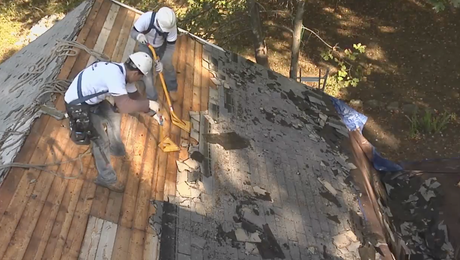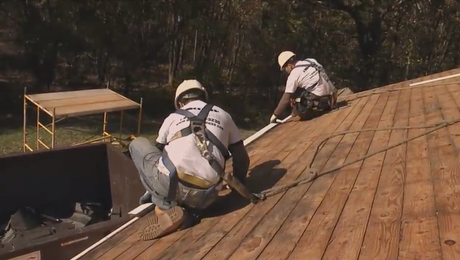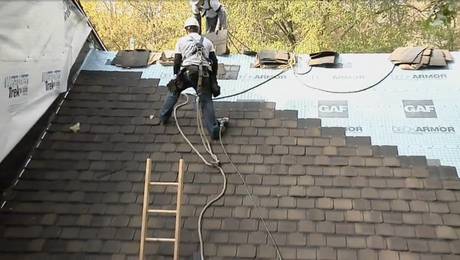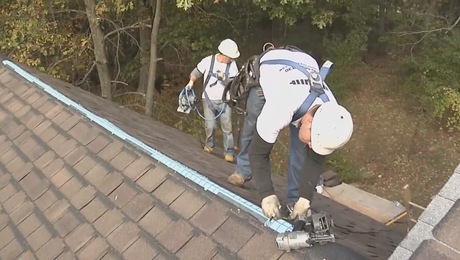How to Install Drip Edge When Replacing a Roof
A pro roofing contractor shows how to install these crucial water-management details before the shingles go on.
A drip edge is a piece of metal flashing that you can install at the bottom of your roof to direct the flow of water away from the fascia. It’s is a great way to protect the roofing components that go beneath a home’s shingles. Knowing how to install drip edge properly is a useful skill for anyone embarking on a roof improvement project.
Drip edge hangs over the sides of your roof, and will not stain over time—meaning it’s both aesthetic and practical, and it will look good in the years ahead. Installing drip edge is an easy way to further shield your home from the elements.
Video Transcript:
Narrator: Once the deck is prepped, it’s time to install a drip edge along the eaves.
Tom Melillo, residential project manager, roof services: Drip edge has basically two purposes. The first is to prevent blow-under leaks in wind-driven rains. And in this particular (F-4) drip edge, there’s a bit of a shelf on it that sticks off the edges of the roof. That shelf acts as a support for the shingles so they are not just hanging off the edge of the roof.
Narrator: Drip edge also prevents rainwater from running down the fascia, and instead directs it into the gutter. The installers use tin snips to cut the drip edge to size, and follow up with a small flat bar to open up the ends. This allows for an easy overlap of about 1-1/2 inches where two pieces of drip edge meet. Now it’s time for the peel-and-stick membrane. Also known as ice-and-water shield, self-sealing peel-and-stick will be installed along the eaves right over the drip edge. This provides a water-tight membrane to protect against ice dams.
[Editor’s note, 2017: The IRC requires drip edge joints be lapped by 3 in. That’s been the case since its first publication in 2000. And the ARMA roof shingle manual calls for 3 in. as well.]
Tom Melillo: Most building codes want your peel-and-stick membrane to be 2-ft. inside the heated wall. The roll is 3-ft. wide, so if you have a 1-ft. soffit, you need 3 feet of peel-and-stick. If you have a 2-ft. soffit, in order to follow code, you’ll need two courses of peel-and-stick.
The manufacturer puts a split in the backing so you can peel off half at a time. This way you can put the membrane down, peel off half, stick it where you want it, and peel off the other half.
Narrator: On the eaves, the peel-and-stick goes over the drip edge (though there is some argument in the industry as whether this is the best way to install drip edge). On the rakes, the drip edge goes over the membrane, so the roofers apply the membrane first. The drip edge is nailed in place using 1-1/2 galvanized roofing nails. A felt-tip marker works great for marking cuts. And, again, prying open the end with a small flat bar allows the pieces to overlap cleanly.
Once the roofers finish off the other rake with drip edge, the put another layer of peel-and-stick along the side-wall transition, lapping it about 8-in. up the wall. This adds extra protection against possible leaks.
Then they move to installing the synthetic underlayment.
Tom Melillo: After the peel-and-stick membrane, we install this polypropylene underlayment. This underlayment is fast replacing traditional 15- and 30-lb. felt papers.
Narrator: These products are increasingly popular because of their durability, light weight, and additional coverage per roll.
Tom Melillo: The polypropylene underlayment is installed with a 3-in. overlap. On lower-pitch roofs, we would go with a 6-in. overlap.










